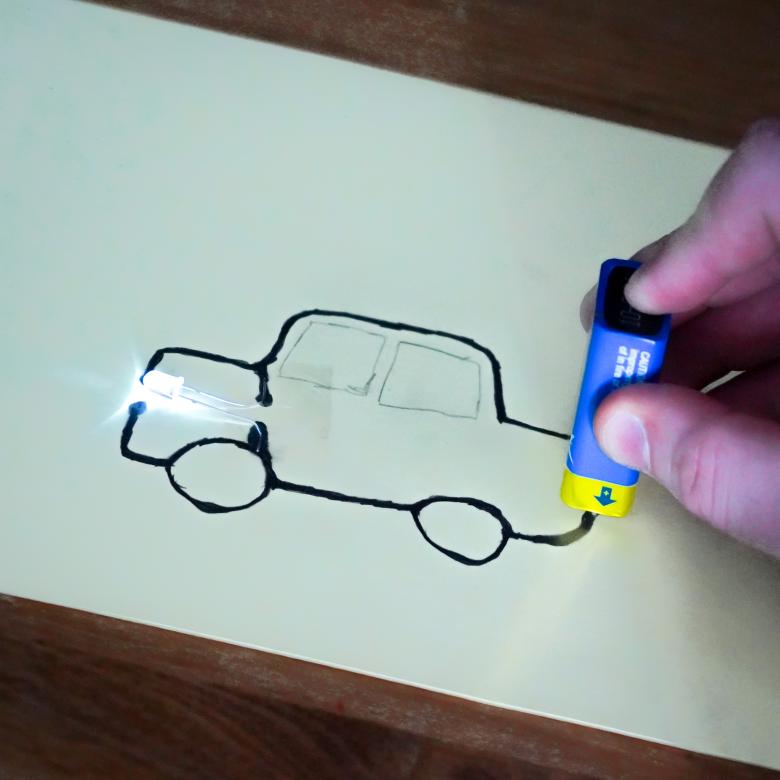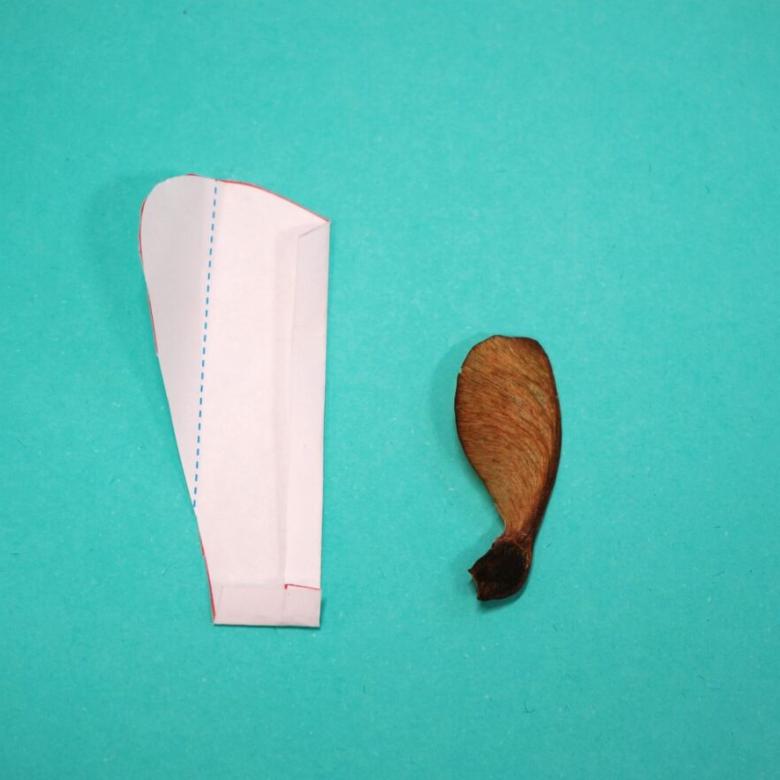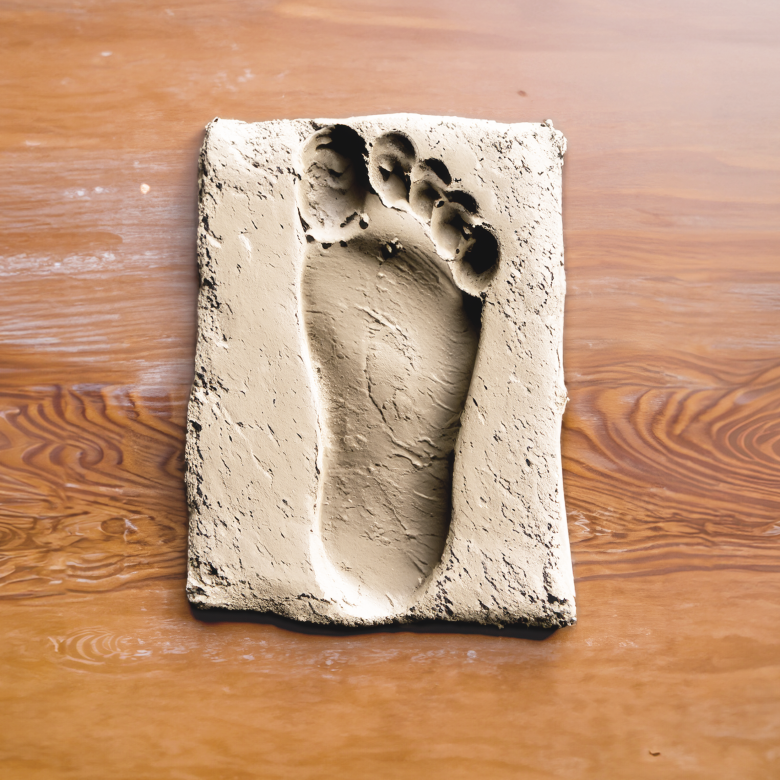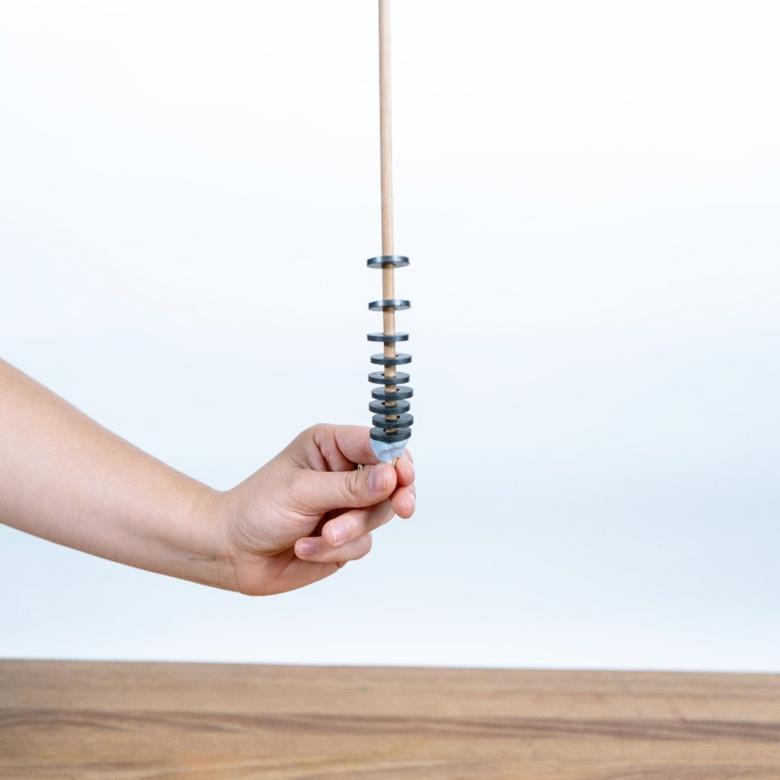You'll need
- A piece of construction paper
- A graphite pencil (2B or 6B pencils work the best)
- Sticky tape
- A light emitting diode (LED) - the type with two stiff wire 'legs'
- A fresh or fully-charged 9V battery
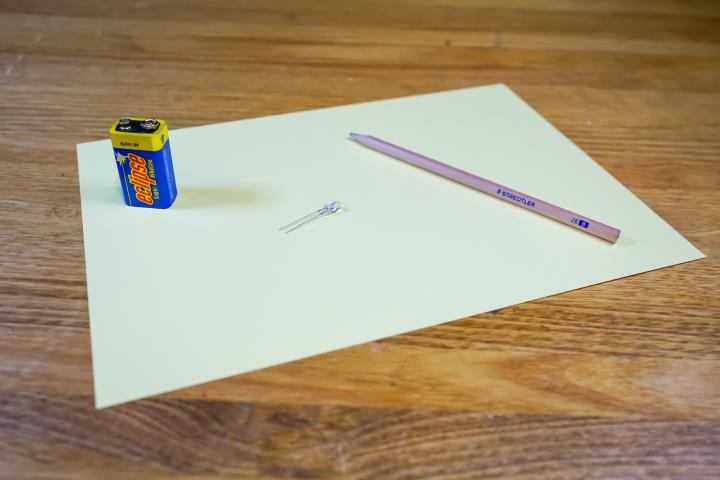
What to do
-
Use the pencil to draw two thick lines on the construction paper. The lines should not touch each other, but the ends should be close enough that you can easily connect the LED and battery in steps 2 and 3.
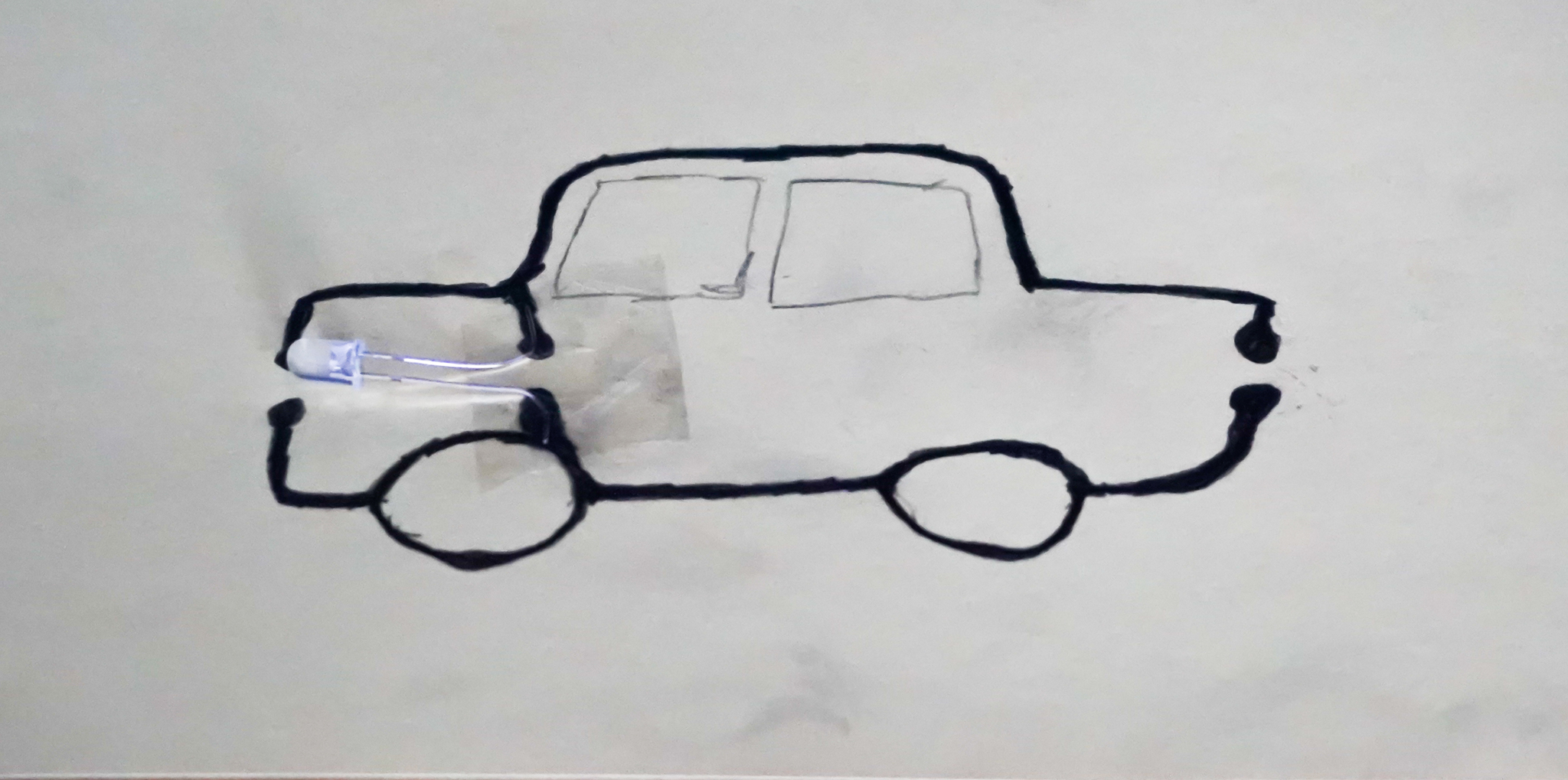
-
Sticky tape the LED flat against the paper so that each 'leg' of the LED touches a different pencil line.
-
Place the terminals of the 9V battery on the pencil lines to complete the circuit. The battery's positive terminal (the small one with the '+' next to it) should be touching the line that the longer leg of the LED is connected to.
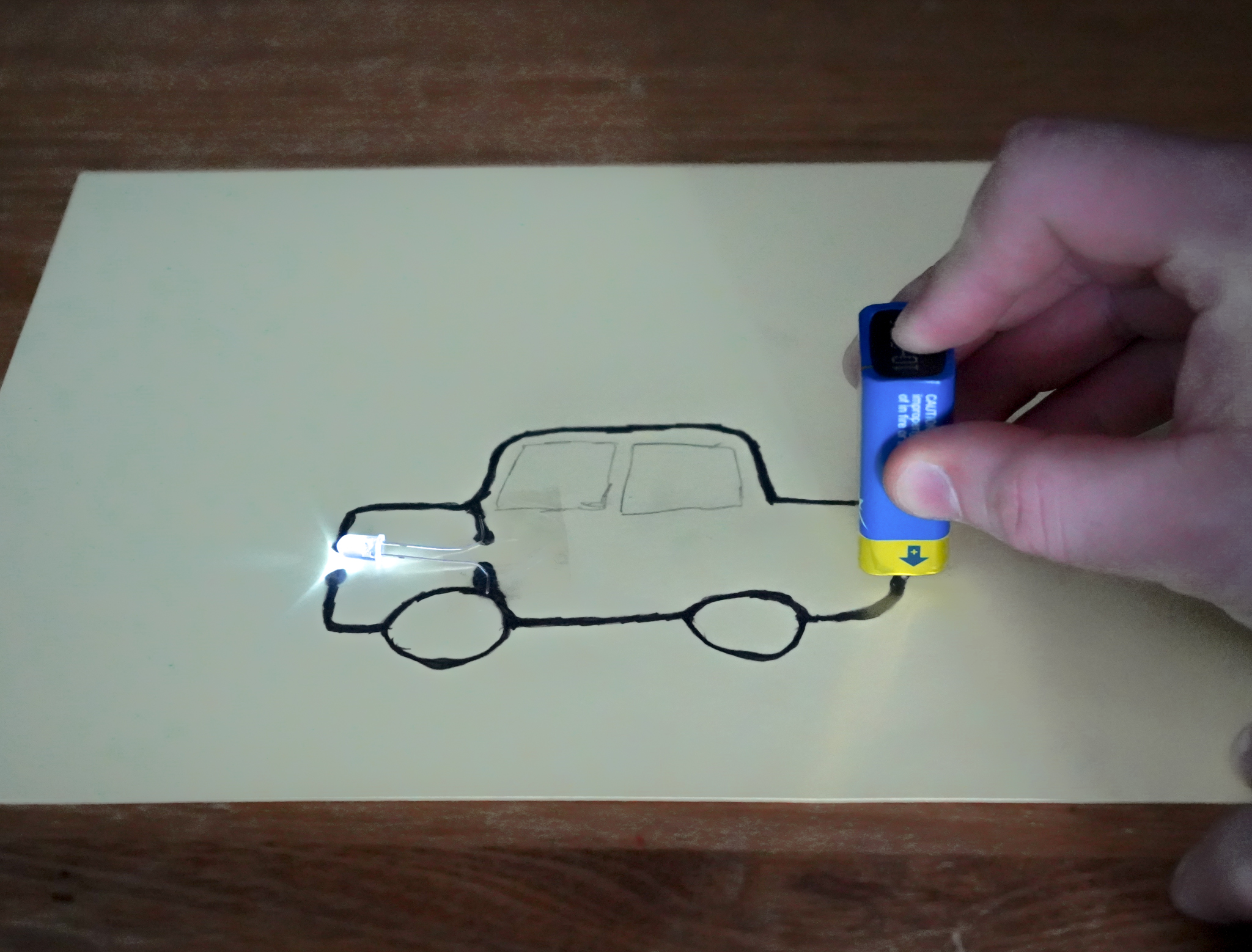
Troubleshooting:
Don’t give up if the LED doesn’t light up the first time! You can try the following tricks to get it working.
- Double-check that the battery’s positive terminal is touching the line that the longer prong of the LED is connected to.
- Try making the pencil lines thicker and darker to give the electricity from the battery more room to flow through.
- Try drawing shorter lines so the electricity from the battery has less distance to travel.
Questions to ask
What happens if you draw a bigger car so each line is longer? What happens if you draw the car using thin lines instead of thick?
What other shapes and pictures can you draw into a working circuit?
Can you draw a circuit with more than one LED?
Can you make an on/off switch by folding the paper so that the pencil line opens or closes a circuit?
What's happening
The inside of the pencil is made of a special type of carbon called graphite. When you draw the pencil leaves a thin layer of graphite on the paper. Graphite is conductive, which means that electricity from the battery can pass through it and make the LED light up.
The graphite from the pencil isn’t as good as letting electricity pass through as the copper used in electrical wires. The electricity from the battery loses more energy the farther it travels. Thin lines of graphite can also carry less electric current than thin lines. This means that the longer or thinner the pencil line, the less brightly the LED will be able to shine.
Did you know
Why was the diamond fired from the train company? It was a bad conductor!
Materials made of carbon can be very good or very bad conductors of electricity, depending on how their atoms are arranged. Graphene, a thin sheet of carbon atoms arranged in a honeycomb pattern, is a very good conductor. Diamonds, with their carbon atoms arranged in a 3-dimensional lattice, are very bad conductors.

